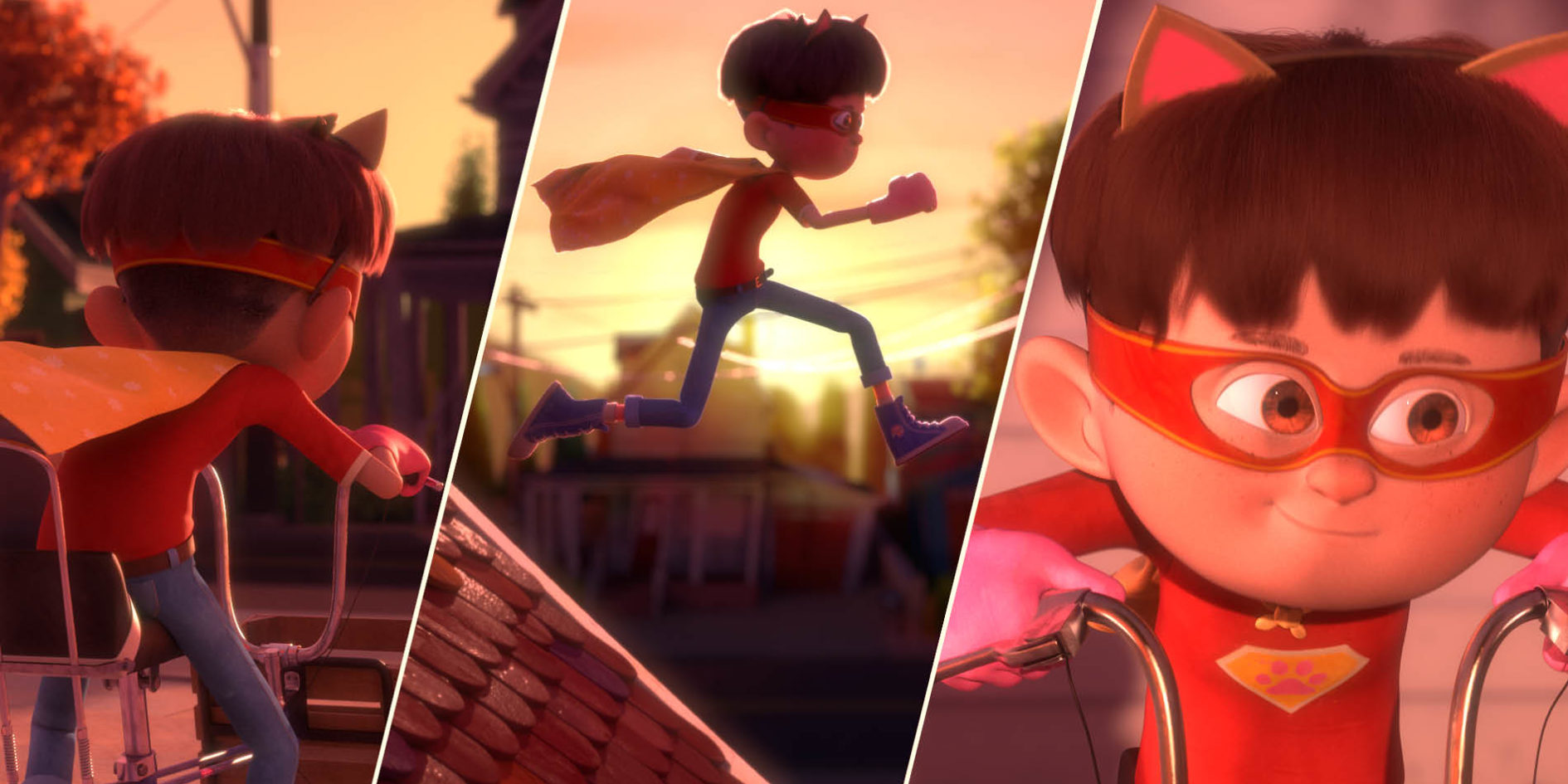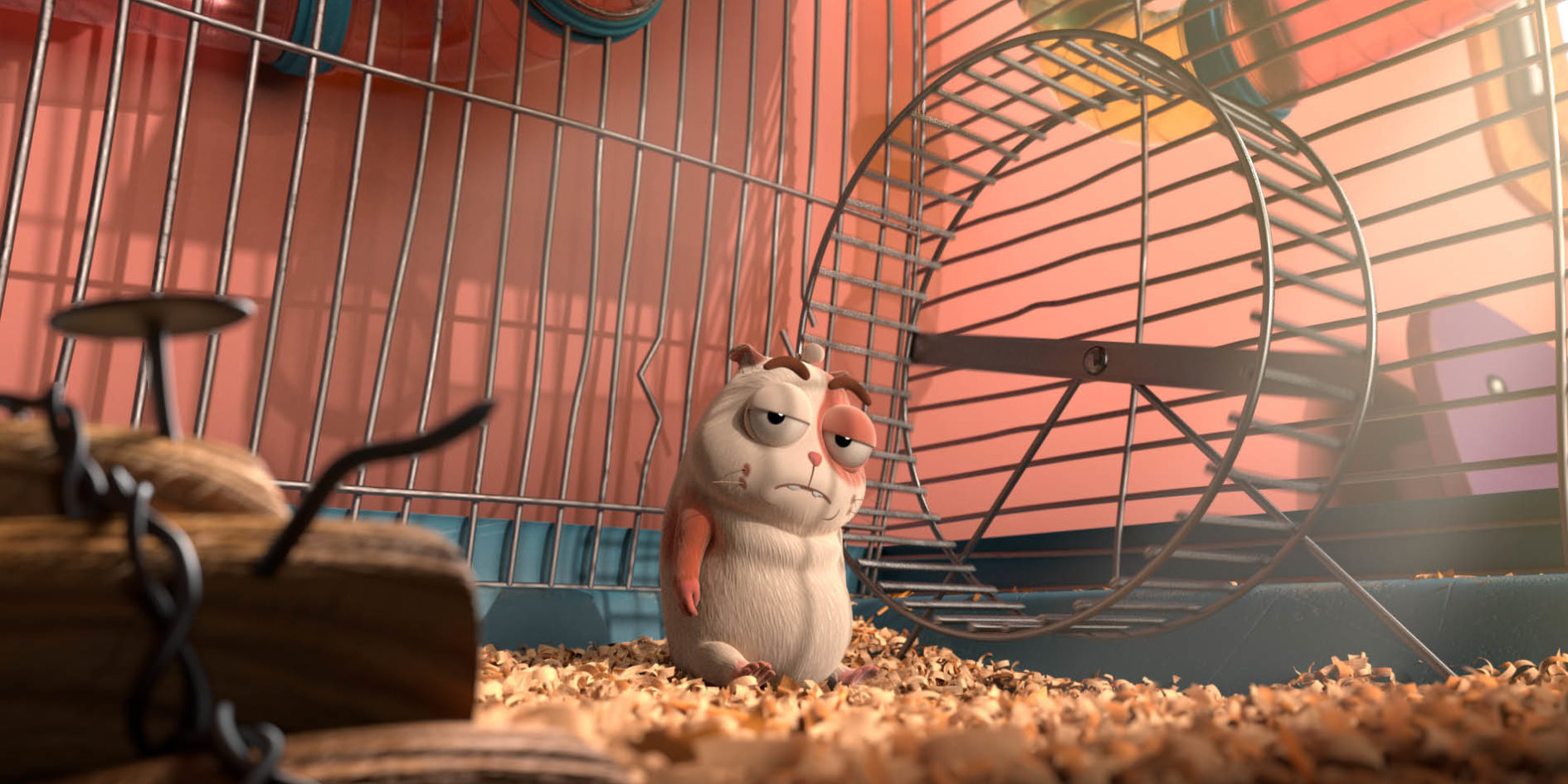
First steps in working life – Amélie Ben Naceur & Steven Lecomte
News . 20 Aug. 2021
Only a few months after graduation, our young graduates have made great strides professionally. Amélie Ben Naceur, TD character in rig, and Steven Lecompte, CG animator, tell us about their entry into the world of work since graduating from CG Animation and Special Effects.
We spoke with Amélie Ben Naceur and Steven Lecomte, two former students of the class of 2020, graduates of the CG Animation and FX Master Degree. Amélie is the co-director of the film Kid Cat, while Steven is the co-director of the film Service Après Vie. During a relaxed chat, they talk about their studies at ESMA and their entry into the professional world. While Amélie tells us what led her to work overseas, Steven explains his job as a CG animator in Stockholm.
HOW DID YOUR JOB SEARCH GO?
Amélie Ben Naceur (A.B.N.) : During the job fair that was held the day after the film screening in Montpellier, I participated in a video interview with a supervisor and a HR of DNEG feature animation. I wasn’t on the appointment list with the studio, so I waited and took advantage of an available moment to ask them if I could introduce myself and chat with them a bit. They informed me that a position in my field was open at that time, lucky me! I took a few days off, prepared my application and applied for the job four days after the job fair. I was contacted by an HR the day after my application to offer me an interview via Zoom (2020 obliges).
Steven Lecomte (S.L.) : My research lasted about a month. I started my first contract in early October.
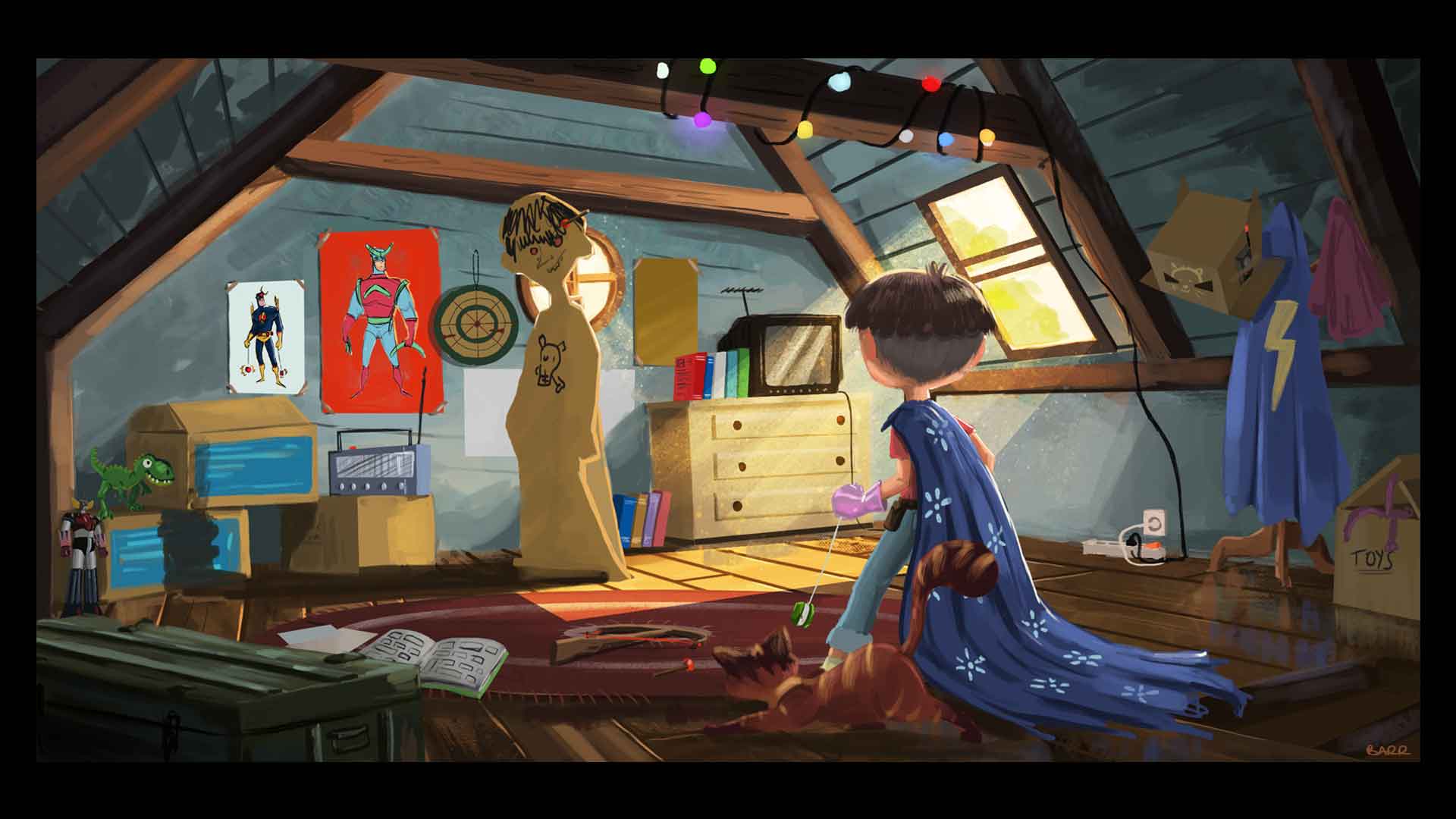
WAS IT LONG?
A.B.N. : It was quite fast on the contrary. All in all, I think I got a positive answer from the studio two to three weeks after the date of the end-of-year screening. It should be noted, however, that I work in the field of rigs, which is one of the only fields where supply is very often greater than demand. This is not the case for all CG disciplines, far from it. So I’ve been in a rather privileged situation, especially this year when the job market was down because of the pandemic.
WHAT IS YOUR CURRENT POSITION AND WHAT ARE YOUR MISSIONS?
A.B.N.: My official position is “character TD” in rig, in the feature animation department. My mission is to work on the characters of the projects realized at the studio. So far my main task has been the facial rig, that is to say the deformations of the face to create realistic or exaggerated expressions according to the stylization of the projects. I communicate almost daily with the modeling team to follow the changes that are made on the characters or to get their feedback on the facial expressions, but also with the animation team to get their feedback on the rigs and add the features they need. Although the facial rig is my main task, I also had the opportunity to work on props (objects) and sometimes even a little bit of rig body (deformation of the characters’ bodies). My production manager assigns me my tasks and manages the deadlines and priorities of each task depending on how much time I need per task and when other teams will need the asset.
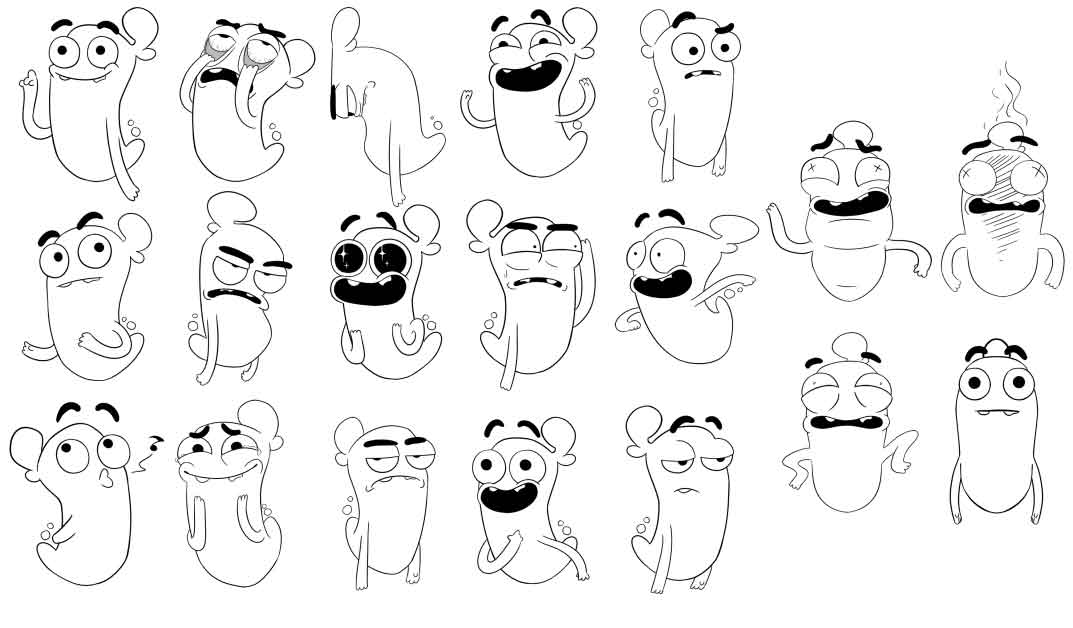
Character Expressions Gaspard, Service Après VieS.L.: I am currently a CG Animator at Milford Studio (Stockholm). Because of the size of the studio, I could very quickly have several responsibilities within the productions. In general I work on Previz and then Animation.
CAN YOU TELL US ABOUT YOUR FIRST STEPS IN THE PROFESSIONAL WORLD?
A.B.N.: I’ve been at DNEG feature animation for a little over six months now and I’m really enjoying it. My very first month, in order to facilitate my acclimatization to the methods and tools, I worked on a first project where I only did the rig of props (objects), that allowed me to learn by starting with tasks a little less composite. After a month, I moved on to a second project where I worked on facial rigs. My lead trained me little by little to the specific tools for this task and the artistic needs of the project. A few weeks ago, I changed again to a project where I was also integrated to the facial rig team. At the end of my first contract, I will have worked on three projects (or more) with completely different formats and styles, which will have taught me a lot, both technically and in terms of integration into the professional world. I have only met great people at the studio, always motivated to discuss, laugh or share their know-how and experiences.
S. L. : Few days separated the moment I was offered an interview and my first day in the company. We started with a short and intensive program. I adapted as best I could to get into the rhythm. I didn’t really understand everything that was happening to me, but it did! I started in Remote, for 6 months, to finally take the road to Sweden.
HOW DID YOU EXPERIENCE THIS ENTRY INTO THE PROFESSIONAL WORLD? DID IT CORRESPOND TO YOUR EXPECTATIONS?
S.L.: I was incredibly surprised at how quickly I adapted. Almost everything was similar to the final production of the graduation films. So it was pretty quick to get my bearings.
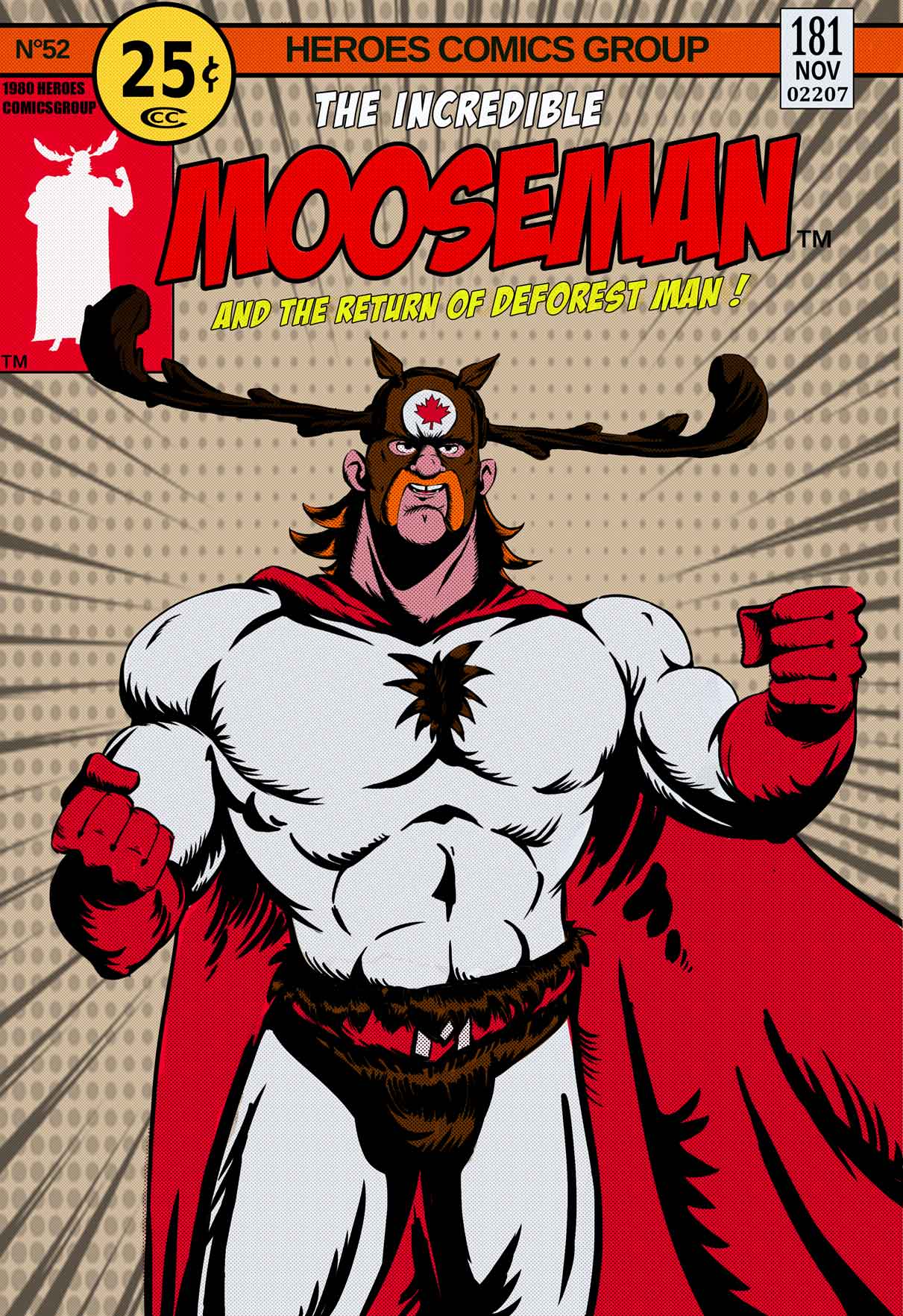
A.B.N.: So far, I’m thrilled with my experience, except for one downside, which has been our common enemy for over a year now: Covid. Despite that, I was very lucky to find a job I liked so quickly after ESMA and to be able to move to London despite the multiple confinements.
HOW DID YOU FEEL? HOW DID YOU EXPERIENCE THIS TRANSITION FROM STUDENT TO PROFESSIONAL?
A.B.N.: Fast but intense! Once I got the answer from the studio, I had a month and a half to pack my bags, i.e. to give back my apartment in Toulouse, to leave France, to move to the United Kingdom, to do the necessary administrative steps upon arrival and 14 days of quarantine. All this in the middle of a pandemic and with the administrative deadline of the end of December 2020: the Brexit. With all this, I didn’t have much time to wonder about the beginning of my professional life, it was quite natural.
WHAT IS IT LIKE TO WORK ON PROFESSIONAL PROJECTS?
S.L.: More responsibility, of course, and a different kind of supervision with the supervisor.

A.B.N.: It’s very cool! Unfortunately I can’t talk about the projects I’m working on until they are released, but they are great projects with very different styles and stories. The idea of working on a larger scale production was a bit scary for me but in the end it’s quite fun to add to the project and unlike student projects, there is a dedicated production management team that takes care of the organization and the distribution of tasks. Still, I miss being part of a small group and holding our project together.
AFTER THESE FEW MONTHS AFTER SCHOOL, WHAT DO YOU THINK ABOUT YOUR TRAINING AND THE ESMA? ON YOUR TRAINING AND THE ESMA?
S.L.: A lot of good memories, good advice, and often, we realize that many of the sentences we heard all the time from the pedagogical team, were true.
A.B.N. : Now that I am integrated into a large-scale production, I realize that what brought me the most out of my training were the group projects and the internship. The very short film of the 3rd year and of course the production of the last year. Having to learn how to manage a production pipeline, going through all the steps of a film production and above all, coming up against the bugs of the tools and the problems of organization among others. Nothing like this to learn how to launch oneself in the working life, these are the school experiences that best describe what to expect afterwards (in a less chaotic way, I reassure you). Beyond the technical learning, the group work is also a learning of communication with others. This is a key asset in professional life and especially in the hiring process.
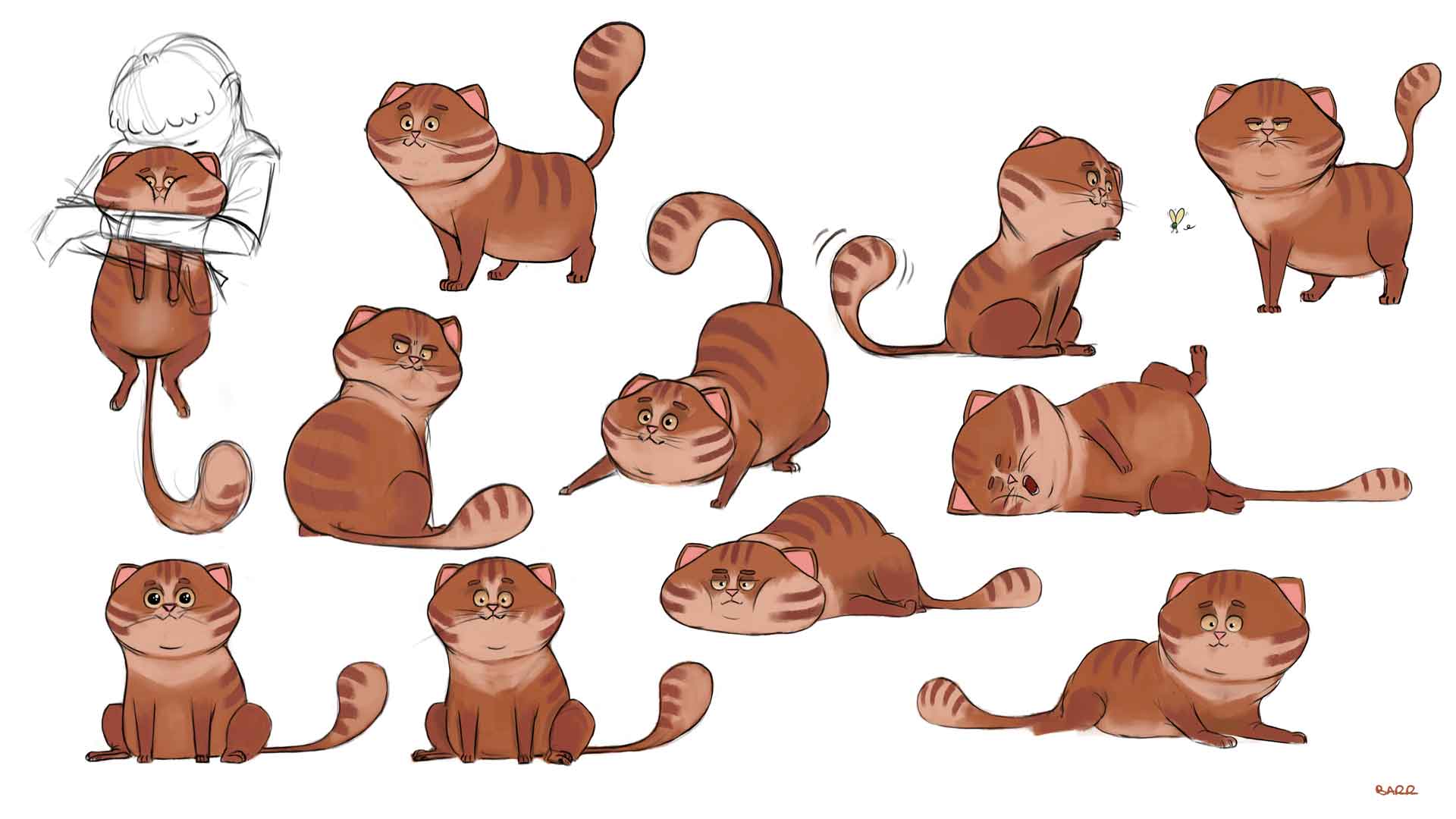
WHAT ABOUT COVID AND THE NEW CONFINEMENT, DID IT HAVE ANY IMPACT FOR YOU?
S.L.: Given my remote situation, it just prevented me from joining the studio in person earlier. Otherwise it was just like what we were used to.
A.B.N.: Pretty much, yes. This pandemic will have tainted my professional beginnings a little bit even if, again, very little compared to the majority of my comrades. The particularity of my beginnings at DNEG is that in more than six months, I still haven’t set foot in the studio. Like many people in our field, I imagine, I’ve been 100% telecommuting since I started and have met very few of my colleagues in person yet.
AND YOUR NEXT FEW MONTHS, OR THE NEXT YEAR, HOW DO YOU SEE YOURSELF IN THE FUTURE?
A.B.N.: Good question! I’m not sure yet what happens next and that’s one of the problems of our profession: job stability and especially long-term visibility. It’s quite rare to have contracts of more than one year, at least as a junior. As for me, I’m happy where I am and if I have the opportunity, I would like to continue my career in feature animation. I still have a lot to learn at the studio and I’m having a lot of fun, whether it’s working or discovering London and the UK in general.
S.L.: It’s very difficult to really predict. There are many projects to come, both personal and professional.
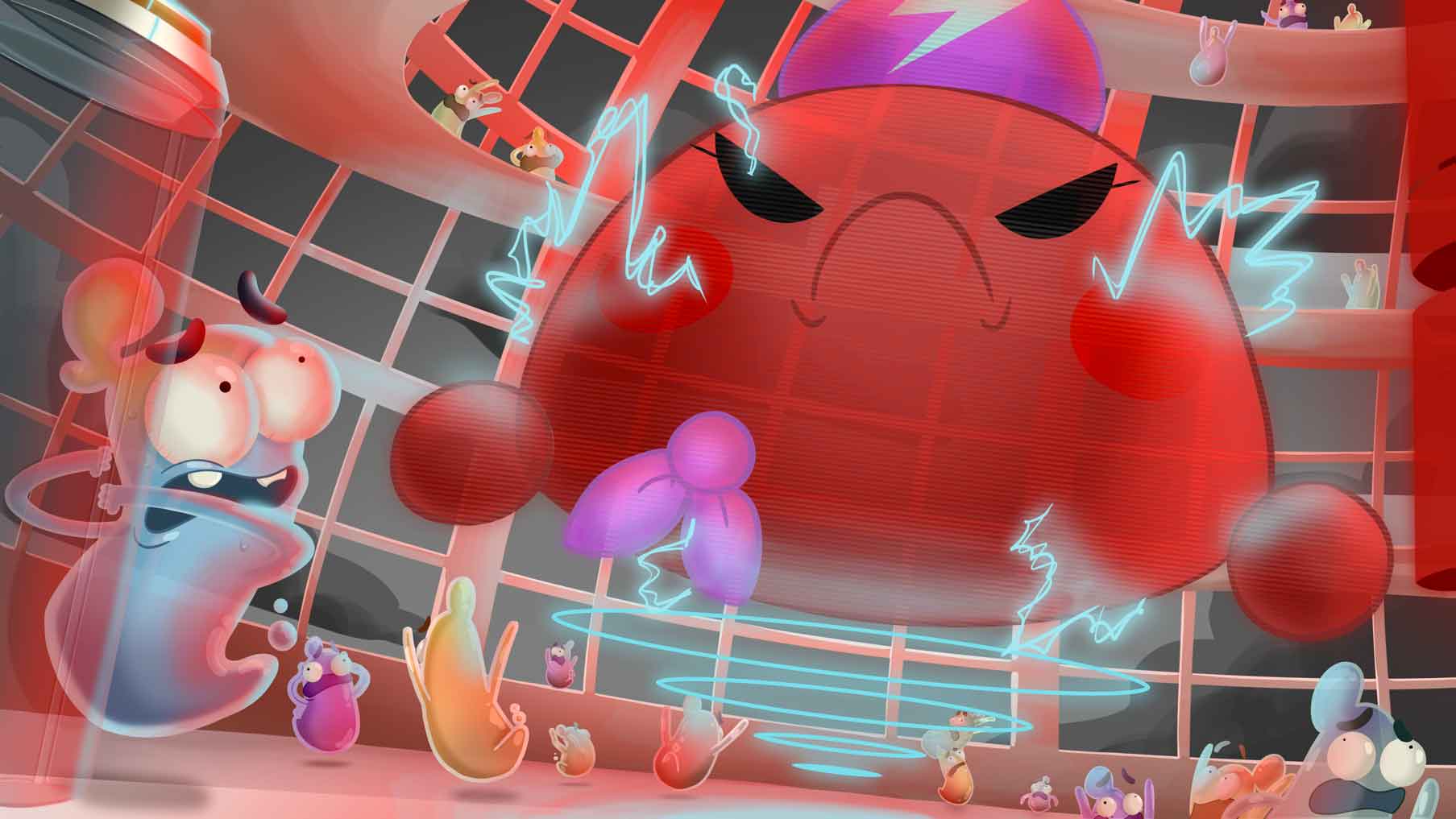
FREE COMMENT
A.B.N.: A little point about life in London, it’s an incredible city! There are so many things to see, museums, parks, pubs of course, but so much more than that. It is a very modern and cosmopolitan city, full of a history that goes back a long way and as impressive as surprising. You meet people from all over the world; almost as many as British people and the majority of people are basically friendly and open. The only negative point of this city, but it is not a scoop, the life is very expensive. Despite this, there are many things to see for free, such as a large number of museums and all the parks, and just by walking around the city, you can sometimes find places that are well worth a visit.
___ ___ ___ ___ ___ ___ ___ ___ ___ ___ ___ ___ ___ ___
___ ___ ___ ___ ___ ___ ___ ___ ___ ___ ___ ___ ___ ___
You can find the films & teasers of the class of 2020 on our Youtube channel ESMA MOVIES.
___ ___ ___ ___ ___ ___ ___ ___ ___ ___ ___ ___ ___ ___




